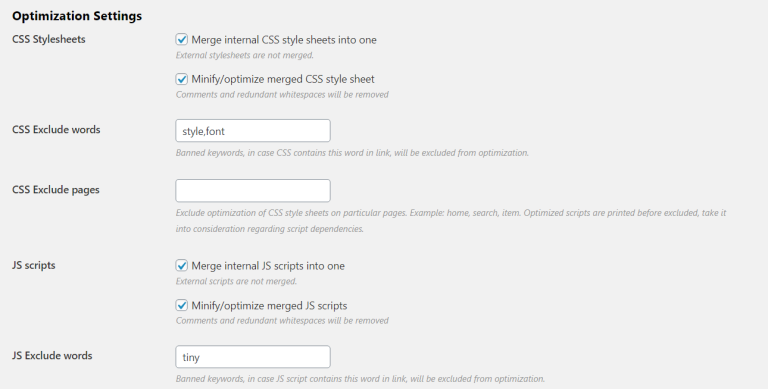
Introduction
In the ever-evolving world of SEO, staying ahead of the curve is essential. One of the most powerful tools in your arsenal is Review Schema, a type of structured data markup that allows search engines to display reviews and ratings directly in search results. This not only enhances your visibility but also builds trust with potential customers right from the SERP.
If you’re running an e-commerce site, a local business, or even a blog that features products, services, or content, Review Schema can make a significant difference in how your site is perceived and clicked on. It’s more than just a technical SEO tactic—it’s a strategic move that can increase your click-through rates (CTR), improve user engagement, and ultimately drive more traffic and sales.
In this article, we’ll explore what Review Schema is, why it matters, and how you can implement it effectively. Whether you’re new to structured data or looking to refine your current strategy, this guide will walk you through everything you need to know.
What Is Review Schema and Why It Matters
At its core, Review Schema is a form of structured data markup that helps search engines like Google understand and display review information—such as star ratings, reviewer details, and summary text—in search results. This structured format ensures that your reviews are recognized and highlighted as rich snippets, making your listing stand out among competitors.
For example, when a user searches for “best hiking boots,” they might see a result that includes a 4.7-star rating with 1,200 reviews. That’s a Review Snippet—a direct result of Review Schema being properly implemented on the page.
Key Benefits of Review Schema:
- Increased CTR: Users are more likely to click on listings that include star ratings.
- Enhanced Trust: A high rating signals credibility and quality to potential customers.
- Better User Experience: Users get a quick overview of what to expect before clicking.
- Improved Visibility: Rich snippets help your content appear more prominently in search results.
This makes Review Schema a critical component of modern SEO strategies, especially in competitive niches where visibility is key.
How Review Schema Impacts SEO Performance
Review Schema isn’t just about aesthetics—it has a measurable impact on SEO performance. Here’s how it influences various aspects of your website’s ranking and user interaction:
1. Boosts Click-Through Rates (CTR)
Searchers often look for social proof before clicking. A review snippet with a high rating can significantly increase the chances of a user choosing your link over others. According to studies, pages with rich snippets have up to 30% higher CTR compared to those without.
2. Improves Engagement and Dwell Time
When users land on a page with clear, structured reviews, they’re more likely to engage with the content. This leads to longer dwell times, which is a positive signal to search engines that your content is valuable and relevant.
3. Supports E-E-A-T (Experience, Expertise, Authoritativeness, Trustworthiness)
Google prioritizes content that demonstrates E-E-A-T. By showcasing real, structured reviews, you build trust and authority around your brand, which can positively influence your rankings.
4. Helps with Voice Search Optimization
As voice search becomes more prevalent, structured data like Review Schema ensures that your content is more likely to be featured in voice assistant responses. This is especially important for local businesses and product pages.
Step-by-Step Implementation Framework
Implementing Review Schema doesn’t have to be complicated. Follow this simple process to ensure your reviews are properly marked up and visible in search results.
1. Define or Audit the Current Situation
Before implementing Review Schema, audit your existing content to identify which pages could benefit from it. Look for:
– Product pages
– Service pages
– Local business listings
– Blog posts with reviews or recommendations
Ensure that these pages already have real, user-generated reviews. Review Schema works best when paired with authentic feedback.
2. Apply Tools, Methods, or Tactics
There are several ways to generate Review Schema:
- Use a Schema Generator Tool: Tools like Schema App, Google’s Structured Data Markup Helper, or Shapo’s Review Schema Generator can automatically create the necessary markup based on your content.
- Manual Coding: If you’re comfortable with HTML, you can manually add the JSON-LD code to your page’s
<head>section.
Here’s a basic example of Review Schema:
<script type="application/ld+json">
{
"@context": "https://schema.org",
"@type": "Review",
"author": {
"@type": "Person",
"name": "John Doe"
},
"itemReviewed": {
"@type": "Product",
"name": "Wireless Headphones"
},
"reviewRating": {
"@type": "Rating",
"ratingValue": 4.5,
"bestRating": 5,
"worstRating": 1
}
}
</script>
3. Measure, Analyze, and Optimize
Once your Review Schema is live, monitor its performance using tools like:
- Google Search Console (GSC)
- Semrush Organic Research
- Google’s Rich Results Test Tool
Track metrics such as:
– Number of review snippets appearing in search results
– Click-through rates (CTR)
– Impressions and engagement rates
If your schema isn’t showing up as expected, double-check for errors using the Schema Markup Validator. Ensure that all required fields (like author, itemReviewed, and reviewRating) are correctly filled out.
Real or Hypothetical Case Study
Let’s take a hypothetical case study of a small online store selling eco-friendly home products.
Before Review Schema:
– The product page had no structured data.
– Only 12% of users clicked on the product link.
– No rich snippets were displayed in search results.
After Implementing Review Schema:
– The product page included 4.8-star ratings from 1,200 reviews.
– Review snippets appeared in search results.
– CTR increased by 27% within two weeks.
– The page ranked higher for targeted keywords like “eco-friendly kitchenware.”
This case study highlights how Review Schema can transform a page’s performance and visibility, even for smaller brands.
Tools and Techniques for Review Schema
To streamline the process of creating and managing Review Schema, consider using the following tools:
- Schema App – A comprehensive tool for generating and managing structured data across your site.
- Google’s Structured Data Markup Helper – A free tool that walks you through the process of adding schema to your content.
- Shapo Review Schema Generator – A user-friendly tool designed specifically for generating and managing review-based structured data.
- Yoast SEO (for WordPress) – Offers built-in support for structured data, including reviews.
- Ahrefs’ Content Explorer – Helps identify pages with high organic traffic that could benefit from review schema.
Each of these tools can simplify the implementation of Review Schema, ensuring that your content is both search-engine-friendly and user-friendly.
Future Trends and AI Implications
As AI and generative search continue to evolve, the role of Review Schema will become even more critical. With Google’s Search Generative Experience (SGE) and other AI-driven features, structured data like Review Schema will help ensure that your content is accurately represented and prioritized in search results.
Additionally, multimodal search—where users can search using voice, images, or videos—will require even more precise and well-structured data. Review Schema will play a key role in helping your content be recognized and displayed across different modalities.
To stay ahead, focus on:
– Ensuring your Review Schema is accurate and up-to-date.
– Leveraging aggregate ratings to show overall sentiment.
– Integrating Review Schema with other forms of structured data, like Product or LocalBusiness schemas.
Key Takeaways
- Review Schema is a powerful tool for improving visibility in search results.
- It increases click-through rates and builds trust with potential customers.
- Proper implementation involves defining your content, using the right tools, and monitoring performance.
- Future trends like AI search and multimodal search will further highlight the importance of structured data.
- Always ensure your Review Schema is accurate, up-to-date, and aligned with your content goals.
Ready to boost your visibility? Start implementing Review Schema today and watch your site shine in the SERPs.
Meta Title: Review Schema — Boosts Visibility in Search Results
Meta Description: Learn how Review Schema improves SEO, boosts CTR, and enhances user trust in search results.
SEO Tags (5): Review Schema, SEO, Structured Data, Rich Snippets, Search Engine Optimization
Internal Link Suggestions:
– [Parameter #1: Search Intent Alignment]
– [Parameter #2: Topical Depth & Relevance]
– [Parameter #3: Original Insights]
External Source Suggestions:
– Google Developers – Structured Data
– Schema.org – Review Schema
– Semrush – Review Schema Guide









